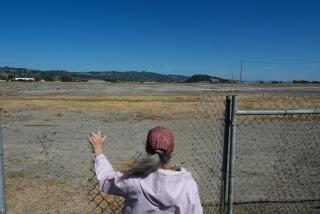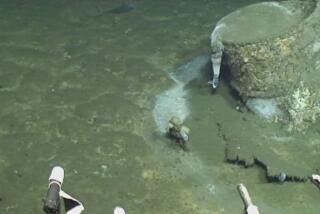FULLERTON : EPA Test-Drilling Starts at McColl
The Environmental Protection Agency has begun test-drilling as part of the effort to clean up the McColl toxic waste dump.
EPA spokesman Terry Wilson said about 30 to 35 bore holes are being dug about 30 feet deep to gather information about waste material at the dump.
The drilling started last week and is expected to end sometime this week, Wilson said. A model will then be developed to determine what the sump looks like underground in hopes of finding a way to stop waste materials from working their way to the surface and producing noxious odors.
While the project’s goal is to halt the emission of smells, the drilling is annoying residents who complain that the testing is resulting in odors that are stronger than usual.
“I’m so sick of these tests,” said Debbi Bushey, who lives hear the dump site. “I don’t really know if this will help. It’s certainly not helping us.”
Wilson said the increased odors were expected but are only temporary and should decrease once the drilling holes are covered.
Bill Duchie, spokesman for the McColl Site Group, a group made up of Atlantic Richfield, Phillips Petroleum, Shell Oil, Texaco Refining & Marketing and Union Oil, said the bore-hole drilling project may help in “addressing the seeps at the McColl site.” He said the group will be asking the EPA for the formal work plan for the project and will offer technical comments if requested.
The dump site was created in the mid-1940s when oil companies producing aviation fuel for World War II deposited the materials in 12 sumps operated by Eli McColl in then-rural Fullerton. Now the dump site, situated under a vacant field and a portion of a nine-hole golf course at Los Coyotes Country Club, is bordered on three sides by upper-middle-class homes.
State health officials have determined that the soil contains sulfuric acid, benzene and arsenic, and the fumes contain sulfur dioxide, causing nearby residents to suffer from headaches, nausea and respiratory problems. While current plans to clean up the site appear to be stalled because of legal differences between the EPA and the McColl Site Group, the EPA has said once cleanup begins it could take as long as seven years.
More to Read
Sign up for Essential California
The most important California stories and recommendations in your inbox every morning.
You may occasionally receive promotional content from the Los Angeles Times.










